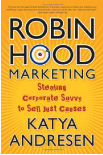Did you make donations online at the end of last year? If so, you probably saw a lot of email acknowledgments arrive in your inbox, automatically.
How many of these so-called thanks sounded like they were written by an automaton?
Most of the emails I received in response to my donation sounded that way. And for the nonprofits I gave to, it’s a missed opportunity.
A Donation is Part of a Relationship
Automation is a great labor-saving device. It means that a lot of fundraisers could celebrate New Year’s Day instead of working on Sunday and the holiday. But consider: how does it work for the donor?
First-time donors
 When a donor gives to your organization for the first time, it’s like agreeing to a first date. Immediately, they wonder:
When a donor gives to your organization for the first time, it’s like agreeing to a first date. Immediately, they wonder:
“Did I do the right thing? Do we have as much in common as I hoped we did? Am I going to be sorry I gave, or will it lead to something that can last?”
So imagine going out on a first date and hearing, “Thank you for agreeing to see me on December 29, for a dinner that cost $36.52. Your company for the evening meant a lot to me.”
Not very romantic, is it? And your date probably says that to everyone! So, there’s a good chance that first date–or first-time donation–will be the last.
Renewal donors
 Getting an impersonal message can be even more off-putting to the donor who’s been giving for years.
Getting an impersonal message can be even more off-putting to the donor who’s been giving for years.
Imagine a loyal supporter of your organization. She has come to events, contributed items for your silent auction, and told her friends about you. This year, she has given her biggest donation ever, online, using her credit card. And what she got back from you was the same automaton response as everybody else.
It’s as if she’s sitting across the table from you at breakfast smiling because she’s left a present by your plate, and she says, “Happy anniversary, my love.” And you say, “Thank you. Please pass the salt”!
Nonprofits, we can do better than that.
Thanks! Auto-Responses that Show the Love
I want to give credit where credit is due. It takes some work to set up an automatic email to go out as soon as a donation comes in. And it’s better than nothing. Plus, some organizations write the ideal thank-you letter and send it in the mail.
But with just a little more effort, your nonprofit can thank donors like you mean it from the very first email you send. Here are good, better, and best ways of revising your automatic email to donors.
Good: Remind the donor what you do.
On the face of it, that seems silly. They just gave to you, right? They should know what you do! But you may be on their list from last year, and in any case, they may need a reminder before the memory fades. Give them the gift of a reminder.
Example–the Children’s Room in Arlington, MA says:
Your generosity supports our work with children, teens, and families who are coping with the death of an immediate family member, and the educators and professionals who seek to help them.
Better: tell the donor what their donation will do. Make the donor the hero.
Example–MADRE tells me:
Your gift enables women to provide food, shelter, emergency medical care and other critical resources for their families and communities. You give women the tools to build new skills and step up as leaders. And your dedication trains grassroots women to demand justice, and advocate for policies, locally and globally, that protect women’s rights.
Best: add a story.
Don’t just tell your donors they make a difference. Show them how they matter.
Share with them a story about one person (and possibly their family) in trouble, who is already better off “because you helped.”
So far, I am not seeing any of my favorite nonprofits tell stories in their automatic thank-you, and that’s a shame. But for your nonprofit, it’s an opportunity. Be the first one to add a story, and your donors will remember.
Using the Right Tools to Be More Human When You Thank
No matter what tool you’re using to acknowledge gifts, there’s a way to edit the acknowledgment. Before last year fades into memory, please take some time to edit it right now.
Whether you use the good, better, or best models above, you can certainly make your first response to a donor something that sounds like it came from a human being. When you’re done, it can be something you’re proud for your friends to receive!
And if the tool you’re using doesn’t give you enough room to tell a good story? Then this is the year to get another tool. The time you spend now will turn into happier donors this coming December…and forever

